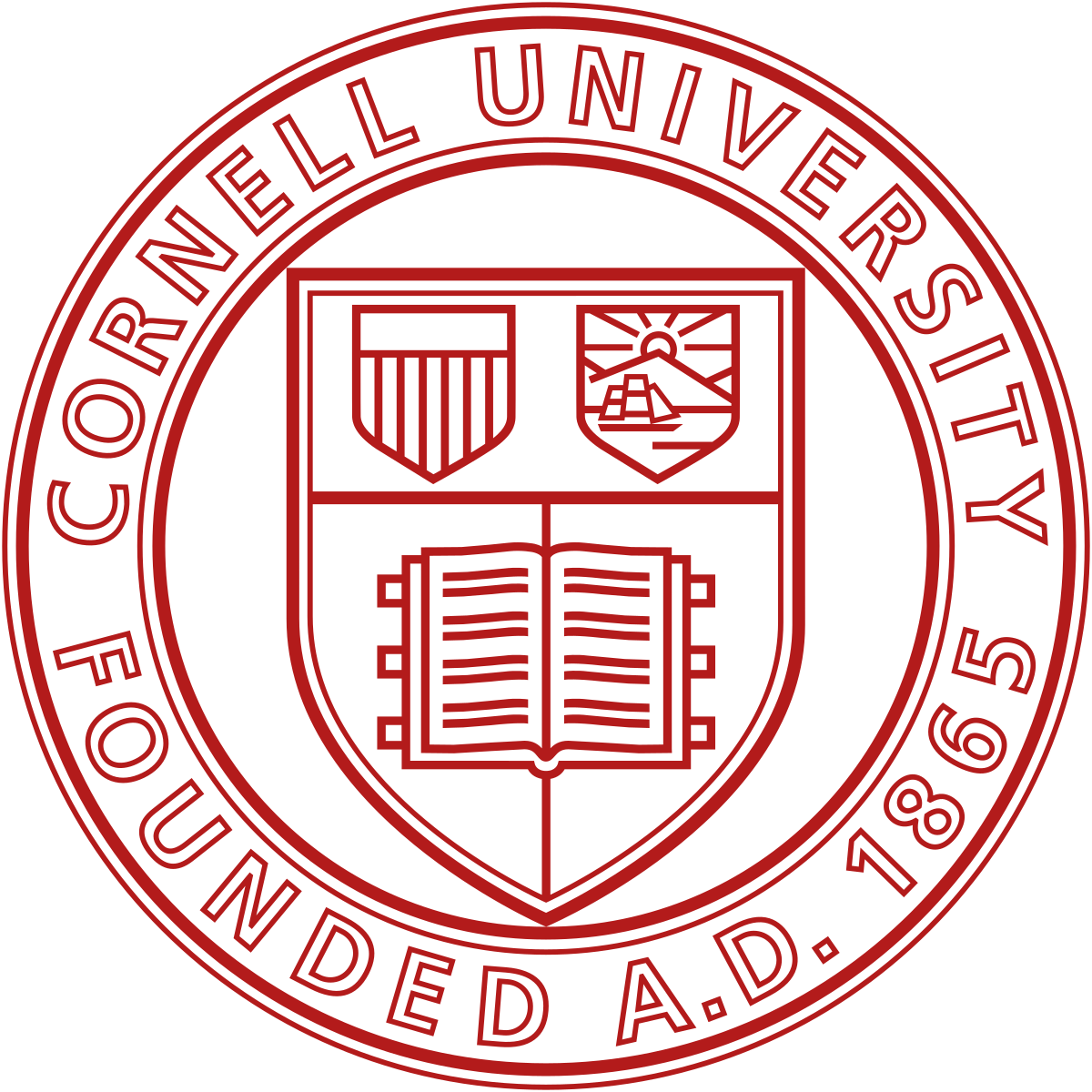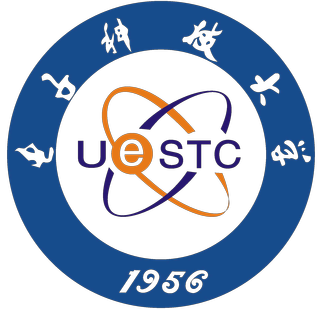|
Guoyi Xu (许郭译) About Me I work as a tenure-track assistant professor at the Department of Electrical, Computer and Biomedical Engineering (ECBE) at the University of Rhode Island (URI). Prior to this, I worked as a postdoctoral research scientist at the Department of Electrical Engineering at Columbia University, advised by Prof. Harish Krishnaswamy. In Aug. 2023, I earned my Ph.D. at the School of Electrical and Computer Engineering at Cornell University, advised by Prof. Edwin C. Kan. Contact Me My Columbia email address has expired so please contact me at my new work email address: guoyi.xu@uri.edu. LinkedIn / Google Scholar / CV / 📢📢📢Call for Ph.D. Students! I have joined the University of Rhode Island as a tenure-track assistant professor in the Department of Electrical, Computer, and Biomedical Engineerng (ECBE), in August 2025. I am looking for 1 - 2 highly motivated and qualified Ph.D. students (fully funded) to join my research group, starting Spring 2026/Fall 2026 semester. For potential Ph.D. students, please fill out the Google form below if you are interested: Google Form. Qualified undergraduate/master’s students interested in doing an internship are encouraged to contact me through email at guoyi.xu@uri.edu. Update: I assure to review all your submitted materials, However, given the number of inquiries, please allow for a few days for an interview invitation. Those not selected for an interview will not be notified, but you are always welcome to send me an email to check the status. Thanks for your patience! |

|
Research |
|
My research bridges the gap between hardware systems and signal processing. I am interested in RF/mmWave joint communication and sensing (JCAS)/integrated sensing and communication (ISAC), indoor localization, device-free indoor target detection for IoT and biomedical applications. I develop signal processing algorithms using inverse methods, matrix decomposition, numerical optimization, detection and estimation theory, statistical machine learning and deep learning. I build radio-frequency (RF) and millimeter-Wave (mmWave) testbeds to implement and validate algorithms. I have rich experiences with sub-6 GHz software defined radio (SDR) platforms like NationaL Instruments (NI) Universal Software Radio Peripheral (USRP) B210, X310 and N210, mmWave SDR platforms like Sivers EVK06002 modules, commercial RFID systems such as Impinj Speedway R420, Xilinx Zynq FPGA, etc. Please check out my Google Scholar page for more details. |
Education |

|
Ph.D., School of Electrical and Computer Engineering (ECE) Cornell University Ithaca, NY, USA Advisor: Prof. Edwin C. Kan Aug. 2018 - Aug. 2023 |

|
B. Eng., School of Electronic Science and Engineering (ESE) University of Electronic Science and Technology of China (UESTC) Chengdu, Sichuan Province, China Aug. 2014 - Jun. 2018 |

|
Concurrent Enrollment, Department of Electrical Engineering and Computer Science (EECS) University of California, Berkeley Berkeley, CA, USA Jan. 2017 - Apr. 2018 |
|
|
Work Experience |

|
Assistant Professor, Department of Electrical, Computer and Biomedical Engineering (ECBE) University of Rhode Island Kingston, RI, USA Aug. 2025 - now |

|
Postoctoral Research Scientist, Department of Electrical Engineering (EE) Columbia University in the City of New York New York, NY, USA Advisor: Prof. Harish Krishnaswamy Sept. 2023 - Jul. 2025 |

|
Software Engineer Intern, Engineering Development Group (EDG) The MathWorks Inc. Natick, MA, USA Managers: Ms. Nitya Jay and Mr. Mukesh Chugh Jan. 2022 - May 2022 |

|
Undergraduate Research Intern, Department of Electrical Engineering and Computer Science University of California, Berkeley Berkeley, CA, USA Advisor: Prof. Ali M. Niknejad Sept. 2017 - Apr. 2018 |
|
|
Selected Publications |
|
Guoyi Xu and Harish Krishnaswamy 2025 IEEE Wireless and Microwave Technology Conference (WAMICON), Cocoa Beach, FL, USA, Apr. 14-15, 2025 This work proposes OFDM-based joint communication and ranging that improves delay estimation accuracy under signal bandwidth constraints for channels with a dominant path, using ideal sinc interpolation achieved by frequency-domain zeropadding. The Cramer-Rao Lower Bound (CRLB) is derived for the variance of delay estimation in zero-mean additive white Gaussian noise (AWGN) channels. An over-the-air (OTA) 60 GHz testbed was built with carrier frequency offset (CFO) calibration. Sub-ns delay estimation, leading to decimeterlevel ranging accuracy, and the measured standard deviation of repeated delay estimations are shown to approach the CRLB benchmark. |
|
|
|
|
|
📌 Leveraging Spatial Diversity for Ambiguity-Free Ultra-Narrowband Phase-Based 3D Localization Guoyi Xu, Aakash Kapoor and Edwin C. Kan IEEE Internet of Things Journal, Mar. 2024 This work presents a novel precision 3D loclization framework that leverages spatially diverse redundant channels to resolve ambiguities under conditions of near-field, inhomogeneous medium and heavy multi-path. It does not rely on a broad bandwidth, and achieves millimeter-precision at sub-1GHz carrier frequency. The multiple-input multiple-output (MIMO) system was implemented on Universal Software Radio Pheripheral (USRP) and harmonic radio-frequency identification (RFID) tag. |
|
|
|
|
|
📌 Device-Free Occupant Counting Using Ambient RFID and Deep learning Guoyi Xu and Edwin C. Kan 2024 IEEE Topical Conference on Wireless Sensors and Sensor Networks (WiSNet), San Antonio, TX, USA, Jan. 21-24, 2024 (Best Paper Finalist) We present an indoor occupant counting system using ambient radio-frequency identification (RFID) sensors and deep learning models, without requiring on-person tags or movement. Effects of wall and furniture tags and significant reduction of number of tags were studied for accurate counting. We achieved counting accuracies above 90% with 80 tags, and above 85% with 16 - 30 tags in room sizes from 100 to 600 square feet. Different room layouts, tag deployment and occupants postures were tested. |
|
|
|
|
|
📌 Phase Offset Calibration in Multi-Channel Radio-Frequency Transceivers Guoyi Xu and Edwin C. Kan IEEE Journal of Microwaves, Jan. 2024 In multi-channel radio transceivers, random phase offsets are present due to non-repeatable initial phases of individual phase-locked loops (PLL). To address this issue, this paper proposes to directly measure both random and systematic time-invariant phase offsets and calibrate them in real time, made possible by additional connections based on splitters and combiners. It achieves repeatable phase calibration to within 2 degrees of errors without relying on bandwidth resources and optimization-based signal processing, is scalable from sub-GHz to mmWave frequencies, and can be extended to distributed systems. The proposed method is designed for applications requiring phase synchronization but without PLL design flexibility. |
|
|
|
|
|
📌 Ambiguity-Free 3D Millimeter-Precision RFID Tag Localization Inside Building Materials Guoyi Xu and Edwin C. Kan 2023 IEEE International Conference on RFID (RFID), Seattle, WA, USA, Jun. 13-15, 2023 (Best Paper Finalist) To determine the 3D location of RFID tags in heavy multi-path and near-field propagation environment, we first obtain the functional relationship between differential phase and differential distance using polynomial fitting and optimization for reference tags and then evaluate the 3D positions of new tags given only phase measurements. A novel ambiguity-free algorithm is devised to identify the correct tag location from multiple candidates by leveraging redundant channel resources with spatial diversity. We prototyped the tag localization system on Universal Software Radio Peripheral (USRP) devices and harmonic backscatter RFID tags and demonstrated millimeter-level localization accuracy at 1.8 GHz second-harmonic carrier frequency inside building materials. |
|
|
|
|
|
📌 Outlooks for UHF RFID-Based Autonomous Retails and Factories Zijing Zhang, Guoyi Xu, and Edwin C. Kan IEEE Journal of Radio Frequency Identification, Oct. 2022 Radio-frequency identification (RFID) in the ultra-high-frequency (UHF) band with passive tags was envisioned for logistic purposes to track a large number of tagged items. However, the present designs of hardware and air protocols still fall short of the required functionality to deploy in large autonomous facilities such as retail shops and assembly factories. This paper presents the evidences of the current RFID limitations, and illustrates the possible paths towards future adoption in large-scale logistic applications. |
|
|
|
|
|
📌 Indoor Object Sensing Using Radio-Frequency Identification With Inverse Methods Guoyi Xu, Pragya Sharma, David L. Hysell, and Edwin C. Kan IEEE Sensors Journal, Jun. 2021 To satisfy the mathematical requirement of many observation points for arbitrary indoor layout and furnishing, radio-frequency identification (RFID) offers a low-cost solution with a plethora of maintenance-free passive tags. Both the received signal strength indicator and carrier phase from tag backscattering can be assembled to generate the voxel reflectivity distribution by the inverse method. We adopt the regularized truncated pseudo-inverse method, and devise the strategies for optimal selection of the critical parameters. An experimental prototype was established to evaluate the system robustness and performance, and the dipole antennas were used to replace patch antennas to enhance the system signal-to-noise ratio (SNR). The regularized truncated pseudo-inverse method together with the improved system SNR has successfully shown higher locating accuracy and lower computational cost. |
|
|
|
|
|
📌 3-D Indoor Device-Free Object Detection by Passive Radio Frequency Identification Guoyi Xu, Pragya Sharma, Xiaonan Hui, and Edwin C. Kan IEEE Transactions on Instrumentation and Measurement, Feb. 2021 We present an indoor device-free object detection system implemented by a commercial radio frequency identification reader and many passive tags around the room. The passive tag as a dispersed observation point offers a cost-effective solution for the necessary spatial diversity. The tag backscattering phase is assembled to generate the reflectivity image inside the capture volume using Fourier-based reconstruction. A new calibration technique is proposed to compensate for multiplicative path losses and subtract the effect of background clutters, such as furniture. A 1:6 room model was first used to study the effects of the indoor materials and room layout, where occupant recognition and centimeter-level locating were successfully demonstrated. Real-scale rooms were then tested, where decimeter-level 3-D location error was achieved for a single occupant, and useful information for occupant posture can also be evaluated. |
|
|
|
|
|
📌 Deep-Learning-Based Occupant Counting by Ambient RF Sensing Pragya Sharma, Guoyi Xu, Xiaonan Hui, David L. Hysell, and Edwin C. Kan IEEE Sensors Journal, Dec. 2020 We employed passive RFID tags in the ambient for occupant counting by a deep-learning solution. The reader collects both carrier phase and received signal strength from each tag, which are inputs to a convolutional neural network. A novel background calibration is proposed to reduce phase offsets and noises in the presence of heavy multipath, which further improves model accuracy. Our results show satisfactory performance, with 0.82 probability for detecting the correct number of occupants, and 1.0 if ±1 error is permitted. The model also exhibits occupant location and posture independent learning, allowing limited and faster training data collection. To demonstrate generalized learning without strong bias to indoor setup, we have also transferred this pre-trained model to another similar-sized room, achieving 0.85 - 1.0 accuracy for different tag-receiver placements and furnishing. |
|
|
|
📌 Indoor Object Sensing Using Radio-Frequency Identification with Inverse Solutions Guoyi Xu, Pragya Sharma, and Edwin C. Kan 2020 IEEE SENSORS, Rotterdam, Netherlands, Oct. 25-28, 2020 Radio-frequency identification (RFID) offers a low-cost solution with a plethora of passive tags as spatially dispersed observation units. Both the received signal strength indicator and carrier phase from tag backscattering are assembled to generate the voxel reflectivity distribution by the inverse method. The regularized truncated pseudo-inverse solution has lower computational cost and higher locating accuracy than the conventional matched filtering. An experimental prototype with different placement of tags and reader antennas was constructed to evaluate the system robustness and performance. |
|
|
|
|
Independent Reviewer Activities |
|
The source code of this website is modified based on Jon Barron's website. |